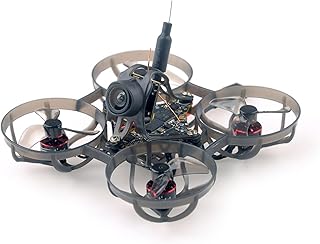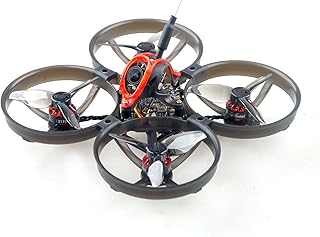SPEEDY BEE Drone for Search and Rescue Operations: Exploring the Potential
The SPEEDY BEE drone, with its impressive features and capabilities, holds significant potential for aiding in search and rescue operations. Here's a breakdown of how it can be utilized:
Advantages:
* Rapid Deployment: The drone's compact size and portability allow for quick deployment to disaster zones, crucial for time-sensitive rescue missions.
* Aerial Reconnaissance: Its high-resolution camera can capture wide-angle images and videos, providing valuable aerial views of the search area. This helps in identifying potential locations of survivors and assessing the terrain.
* Thermal Imaging: The thermal imaging capabilities allow the drone to detect heat signatures, even in low-light conditions. This is particularly useful for finding survivors trapped under debris or in dense foliage.
* Long Flight Time: The extended battery life enables the drone to cover larger areas and remain airborne for a longer duration.
* Real-time Data Transmission: The drone can transmit real-time data and imagery to ground teams, providing critical information for decision-making.
* Communication Relay: The drone can potentially be used as a communication relay in areas where ground communication is compromised.
Potential Applications:
* Locating Survivors: The drone can be deployed quickly to survey disaster zones, searching for signs of life using its thermal imaging capabilities.
* Mapping the Terrain: The drone can generate accurate 3D maps of the affected area, aiding in the assessment of damage and identifying safe access points.
* Delivering Supplies: The drone can be used to transport small emergency supplies like water, medicine, or communication devices to stranded survivors.
* Monitoring the Situation: The drone can be used to monitor the situation continuously, providing updates on the environment and potential hazards.
Challenges and Considerations:
* Environmental Factors: Weather conditions like strong winds or heavy rain can impact the drone's flight capabilities.
* Battery Life: The drone's battery life needs to be sufficient for extended search missions.
* Regulations: Drone operation in specific areas might require legal permits and approvals.
* Operator Skill: Experienced operators are essential for safe and effective drone operation during rescue missions.
Conclusion:
The SPEEDY BEE drone offers valuable capabilities for aiding in search and rescue operations. Its versatility, long flight time, and advanced features like thermal imaging make it a potential game-changer for finding survivors and facilitating faster and more efficient rescue efforts. However, careful planning, skilled operators, and consideration for regulatory frameworks are crucial for ensuring safe and effective deployment of this technology in critical situations.


